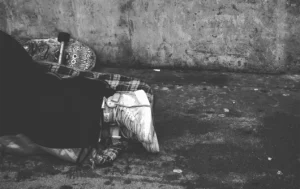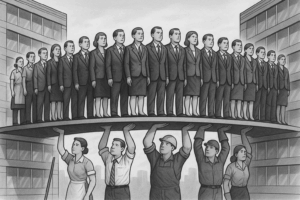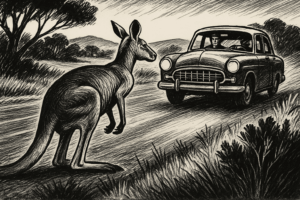Landing in a Different World
After a short flight, my flight descended through Adelaide’s morning sky. Below, the green algae bloom sprawls across the water like a vast, luminous stain. A big topic around Australia, and the reason I left my fishing rod at home. This was my first visible sign that I was stepping into a different ecosystem, both literally and figuratively. Within a couple of hours, I would discover just how different it was from my everyday world. However, this would be another opportunity to observe and practice a few ethnographic skills.
This was my inaugural agricultural field day. I was not just attending, but organising and coordinating a display of agricultural tyres for the Yorke Peninsula Field Day, South Australia’s most significant agricultural event. As someone whose professional and academic life had largely unfolded within urban confines, I was about to step into a cultural field I had only understood theoretically.
The Urban-Rural Threshold
I headed out in my hire car through the suburbs of Adelaide. Driving along the expressway, Adelaide’s suburbs quickly surrendered to the rural landscape. The city did not taper or fade; it simply ended. One moment, suburban streets and shopping centres; the following, endless stretches of farmland punctuated by silos and machinery. The transition between urban and rural felt less like a gradual fade but more like crossing a threshold into another world entirely. The heavy use of pesticides in the regional area meant that my windscreen stayed bug-free. Driving out to the Yorke Peninsula, I found myself thinking about Pierre Bourdieu’s concept of the “field”, those social spaces with their own rules, hierarchies, and forms of capital. I was transitioning from one field to another, and I was not yet fluent in the language of that field.
Arrival: The Display Takes Shape
The installation team had spent the weekend transforming an empty plot into our exhibition space. By the time I arrived, the marquees were up and it was hard to miss bright coloured flags against the surrounding green fields. The tyre stands all aligned with geometric precision, and the large agricultural tyres, those massive rubber monuments to industrial farming, had been delivered and arranged. Everything was ready. Everything except me, perhaps.
The Anthropology of the Field Day
The Yorke Peninsula Field Day is more than a trade show; it is a cultural institution. Walking the grounds, I began to see it as Bourdieu might, as a space where different forms of capital circulate and convert. Economic capital is obviously involved in the transactions and deals being struck. However, more importantly, social and cultural capital: the handshakes between farmers who have known each other for decades, the shared language of crop yields and soil conditions, the tacit knowledge that separates insiders from outsiders.
Meeting the Business Development Managers from South Australia and representatives from the major tyre brands, I was conscious of my outsider status. These were not just salespeople; they were cultural intermediaries who spoke both the language of corporate agriculture and the vernacular of the farmers themselves. They moved through the space with an ease I envied.
What struck me most was watching the networks become visible. In Bourdieu’s terms, this was social capital made manifest. If a farmer mentioned they were from Port Vincent or Winulta, the BDM would instantly respond, “Talk to Dave at XYZ dealership on Main Street”. What impressed me the most was not just the ability to mention a business name, but the person, revealing the relationship. These were not databases or CRM systems; these were living maps of the agricultural community held in human memory.
The networks were not just geographical; they were relational webs built over decades. They knew who had purchased what, who was expanding, whose son had taken over the dealership, which operations were struggling and which were thriving. Those dealers would then know their customers similarly. This knowledge was currency in this field, and I had none of it.
Reflexivity: City Meets Country
I could not help but notice the differences, not judgmentally, but ethnographically. The people at the field day carried themselves differently from those I encountered in Melbourne or even in the peri-urban area where I live. There was a directness, a physicality, an ease with silence that felt foreign to my urban cadence of conversation. They assessed the tyres with hands, not just eyes, running palms over tread patterns (this happened a lot), slapping sidewalls, discussing load ratings with the casualties of people for whom these objects were daily tools, not products.
The material culture revealed itself in unexpected ways across the event. I started to notice that young farmers (and a few older) wore Akubra hats with coloured sheep tags adorning their hat bands, bright yellows, oranges, and blues standing out against the felt. What may have seemed like quirky decoration to an outsider was actually a kind of agricultural semiotics, repurposing the tools of livestock management into personal adornment. It spoke to a culture where work and identity were not separate spheres but woven together, where the objects of farming life became the markers of belonging.
Moreover, I realised: I was the one being assessed, too. Not hostilely, but carefully. Who was this person from the city? Did they understand what farmers actually needed, or just what the brochure said? Out and about, I got the sense that people knew I was a city slicker. Something about the way I moved/lurked through the space, camera in hand, perhaps, too cautious around the machinery, too clean, too observant in a way that marked me as someone documenting rather than simply inhabiting. The field day felt more like a liminal experience, a threshold space between my urban field and this agricultural one.
Standing in the wind and dust became part of the ritual of joining this field. Not complaining about it, not retreating to the comfort of the marquee (which I did a couple of times), but simply being present in the elements as everyone else was. Even the sun, dust and the rain that settled on my clothes and skin felt like they were kind of an initiation. A very small price of admission. By the third day, I had stopped noticing it, or rather, I had accepted it as the condition of being there. That acceptance was itself a small step toward belonging.
The Weight of Tacit Knowledge
What humbled me most was the depth of tacit knowledge surrounding me. This was not knowledge you could get from manuals or training programs. It was embodied, accumulated through years of presence in this field (in both Bourdieu’s and the literal sense). The BDMs knew which farmers would need convincing and which had already decided before arriving. They understood the unspoken hierarchies, which brands carried prestige, which innovations would be dismissed as “city ideas,” and which practical improvements would spread through the community like wildfire.
Watching my BDM team work was an education in itself. They did not just sell tyres—they solved problems. Each conversation became a diagnostic exercise: What crop? What soil type? Seeding or harvest? Tractor or implement? The questions seemed simple, but the implications were complex.
Soil compaction emerged as a recurring theme. A farmer would mention yield variations across a paddock, and the BDM would immediately ask about tyre pressure and footprint. Too much compaction crushes the soil structure your crops need to thrive. The wrong tyre could cost a farmer thousands in reduced yields over a season, losses that might not show up immediately but would compound over time.
Then there were the lifetime return on investment calculations. These were not impulse purchases. A set of agricultural tyres represented a significant capital outlay, and farmers needed to see the math. The BDMs could run the numbers in their heads including the hours of operation, expected wear rates, fuel efficiency gains from reduced rolling resistance, and yield improvements from better soil management. They spoke the language of pragmatic economics that farmers understood viscerally.
One expert told me, almost casually, about soil types across the peninsula and how they affected tyre wear patterns—sandy soils versus clay, moisture content, how different profiles performed under varying conditions. He was not showing off; this was simply how he saw the landscape. Where I saw farmland, he saw a complex text of agricultural challenges and solutions, each requiring the right rubber compound, tread pattern, and pressure specification.
The specificity astonished me. Not just “agricultural tyres” but: which tyre for which implement, which operation, which season? A tyre optimised for seeding in damp spring conditions performed differently from one designed for harvest work in dry summer soil. The BDMs knew these distinctions instinctively and could match farmers to solutions with a precision that came from years of watching what worked and what failed.
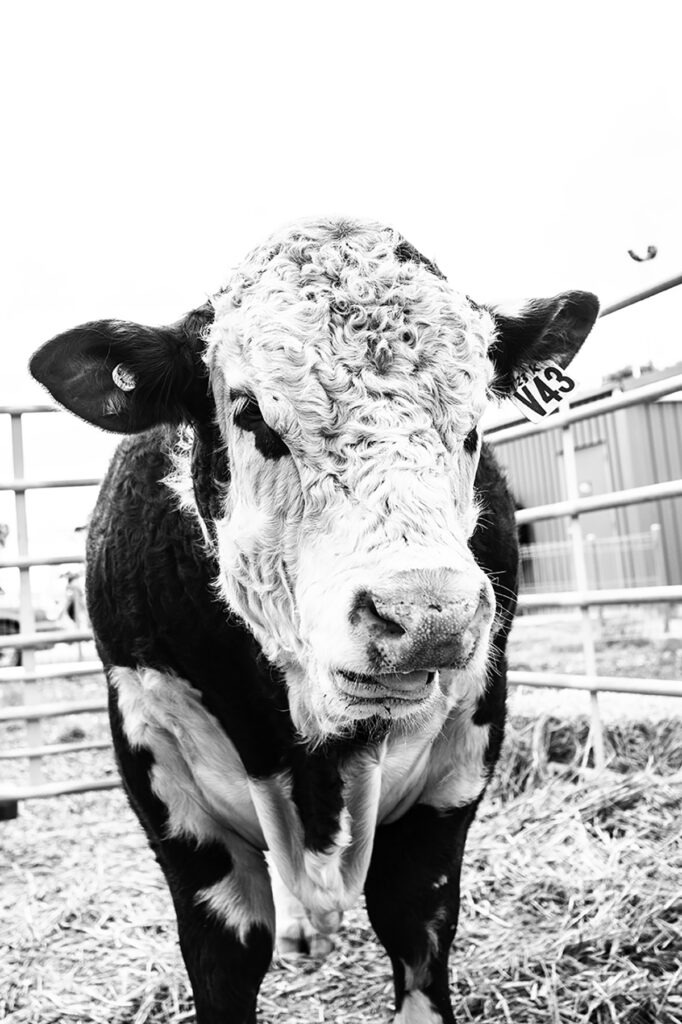
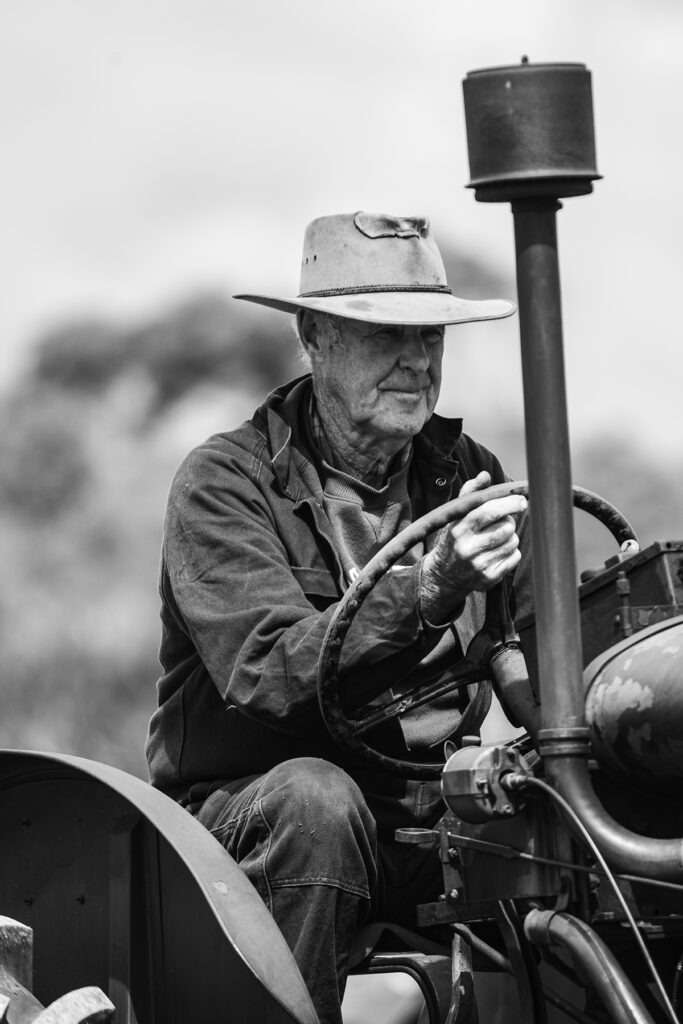
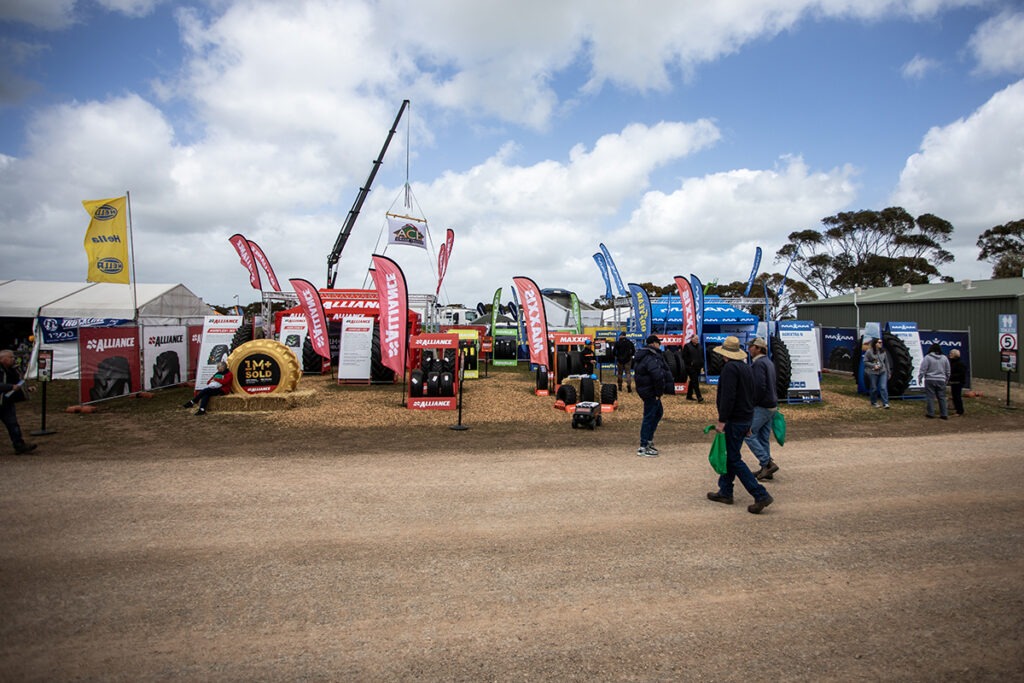
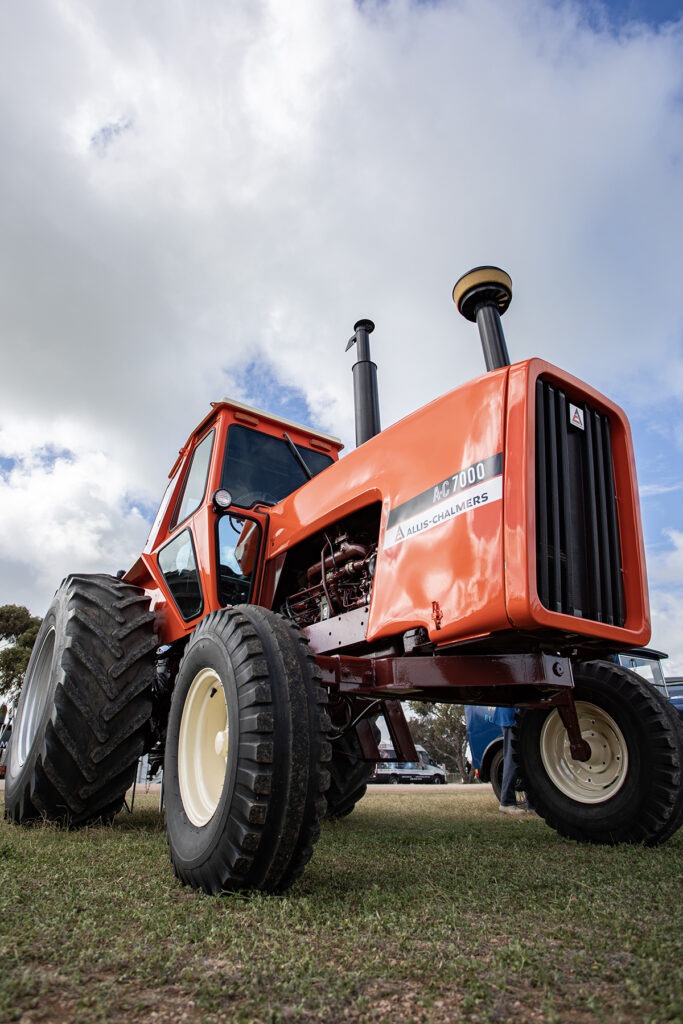
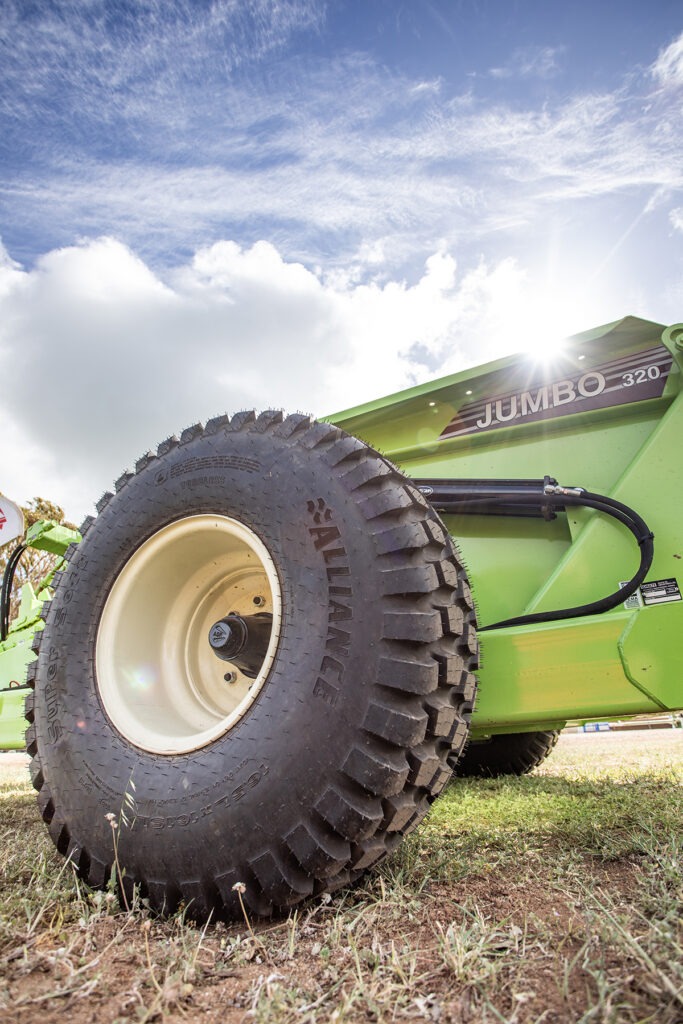
Stories of Endurance: Days Two and Three
Over the three days I was there, the conversations deepened. Between discussions about tread depth and load capacities, farmers told stories. Not complaints, stories. Narratives of endurance that revealed the proper cadence of agricultural life.
One farmer described his rhythm: spring planting, summer maintenance, autumn harvest, winter planning. A cycle as old as agriculture itself. Then he paused and added the interruptions, the droughts that turned fields to dust, the floods that swept away topsoil and hope in equal measure, the price crashes that made profitable harvests into break-even years at best.
“You plan for the rhythm,” he said, “but you live in the interruptions.”
Another spoke of watching commodity prices like city traders watch stock tickers, except their entire year’s income rose or fell with those numbers. The harvest does not wait for favourable market conditions. You take what the season gives you and accept what the market offers.
These were not academic abstractions. These lives were shaped by forces largely beyond individual control, including climate, global markets, and weather patterns that shifted in ways making generational knowledge less reliable than it once was. However, there was no fatalism in these stories, only a pragmatic resilience that seemed baked into the culture itself.
The economics became visceral in a way I had never encountered in Melbourne boardrooms. Farmers did not calculate tyre costs in dollars—they calculated in tonnes of grain. I heard it repeatedly: “I need to sell a tonne of lentils just to replace one tyre on my tractor at today’s rate.” Not kilos, tonnes. The scale of agricultural economics was rendered in the units that actually mattered to them.
These conversions happened instinctively, constantly. Four tyres meant four tonnes. A complete set for the harvester? The math was immediate and sobering. When commodity prices dropped, those calculations changed overnight; suddenly, the same tyres required more grain, more acres, more risk.
The BDMs understood this implicitly. They were not selling rubber; they were asking farmers to convert future harvests into present investments, to gamble that soil compaction savings and efficiency gains would outweigh the tonnes of lentils, wheat, or barley they would need to commit.
The BDMs listened to these stories with the attention of people who had heard hundreds of variations but never stopped caring about each individual telling. They understood that selling agricultural tyres was not just about product specifications; it was about understanding the economic calculations farmers constantly made, the risks they weighed, and the investments they could and could not afford.
Learning to See Differently
By the end of three days, I had not mastered this new field—not even close. However, I had begun to perceive its contours. The field day was not just about displaying products; it was about demonstrating belonging, proving your understanding of the agricultural lifeworld, and converting outsider status into a trusted advisor.
The green algae bloom I had seen from the plane? Several farmers mentioned it unprompted, discussing its implications for water management with the same analytical depth I might bring to market trends. Everything is connected to everything else in this field—weather, soil, water, machinery, economics, tradition, innovation.
I had arrived in Adelaide as an organiser. I left three days later as a student, grateful for the education I was receiving from people whose expertise was written in the lines of their faces and the confidence of their hands assessing a tyre’s worth. People whose livelihoods depended on reading the land, the sky, the markets and making decisions with imperfect information and no guarantee of outcomes.
The agricultural field, I realised, demanded a different kind of courage than the urban spaces I knew. A courage that was quiet, persistent, and renewed with every planting season despite the droughts, the floods, and the price variations that could undo everything.
Reflections from a first-timer learning to read the language of agriculture, one tyre tread at a time.
